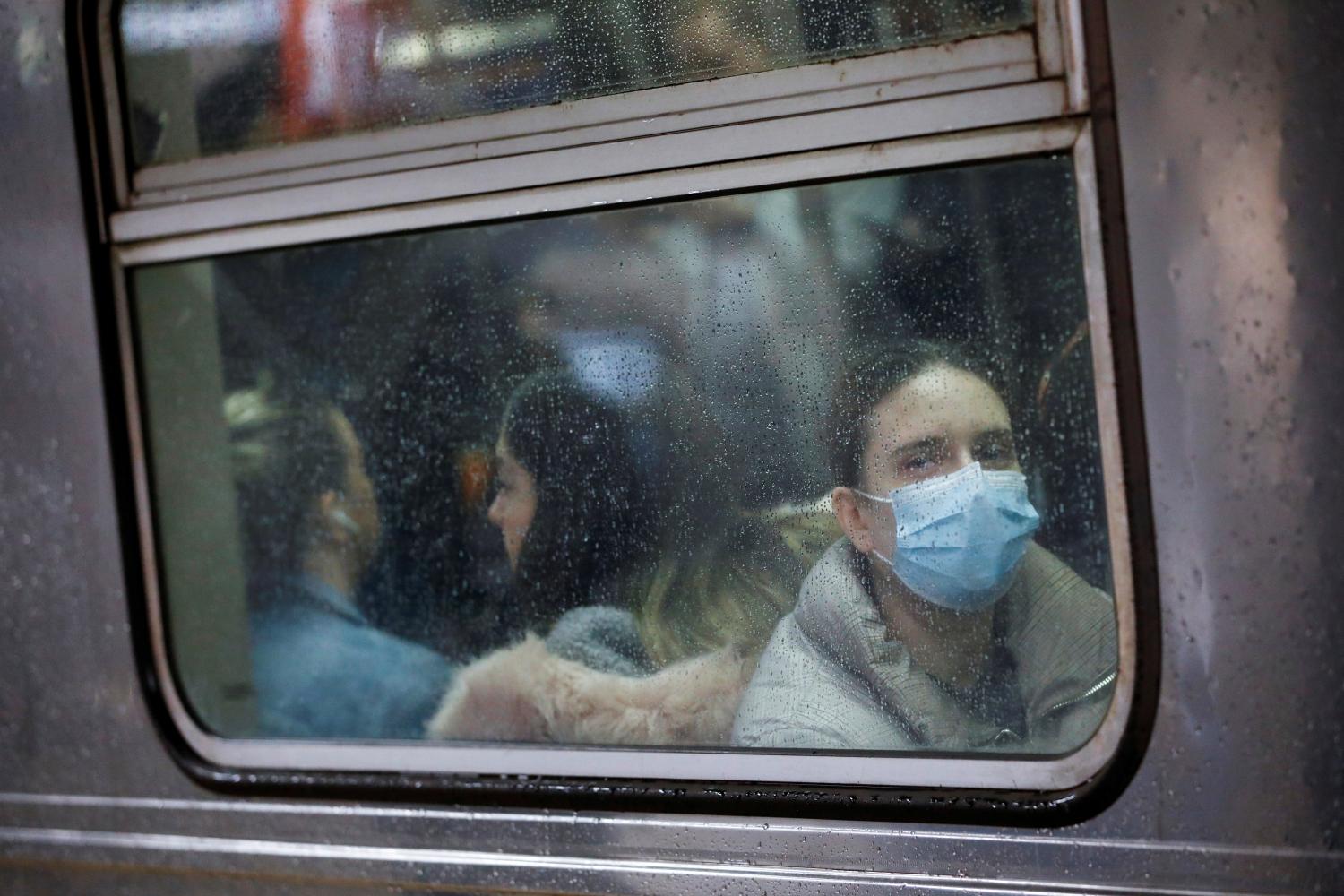Contents
- Big cities experienced the sharpest pandemic year losses
- The suburban growth advantage continues
- Putting recent city growth changes in perspective
Much attention has been given to COVID-19’s impact on population losses in the nation’s largest cities, raising questions about a potential urban “exodus” and the shape of the post-pandemic city.
This analysis sheds light on the issue by examining the Census Bureau’s recently released estimates of annual city population changes for the 2010s decade through the year July 2019 to July 2020.1 They indicate that most big cities with populations exceeding 250,000 showed lower population growth in the year the pandemic began than in the previous year, and nearly one-third of them registered their lowest annual growth in the decade. Still, only a few of these cities—mostly the nation’s largest—showed sharp population losses during the year COVID-19 began. Many of the others either continued population losses or slower gains that emerged earlier in the 2010s decade—or registered growth rises.
The analysis also examines the relative growth of cities and suburbs within the nation’s largest metropolitan areas. It reveals that the growth advantage many cities sustained over their suburbs at the beginning of the decade sharply narrowed or reversed even before the pandemic.
Big cities experienced the sharpest pandemic year losses
The cities that showed the biggest negative growth for July 2019 to July 2020—the year the COVID-19 pandemic began—were those with populations exceeding 1 million, as Figure 1 shows.

Figure 1 shows growth rates of cities grouped into three size categories: cities with populations exceeding 1 million (10 cities); those with populations between 500,000 and 1 million (27); and those with populations between 250,000 and 500,000 (52).
Although each category registered noticeably lower growth in the past four years than earlier in the decade, the growth downturn was especially sharp for the “1-million-plus” group. This is consistent with broader trends associated with the mid-decade rise in the economy, which accelerated movement out of large metropolitan areas and into smaller places, as well as increased movement to the suburbs among “stuck in place” millennials and other city residents.
Yet beyond those forces, large cities especially showed exceptionally slow or negative growth during the pandemic year. Among the 10 largest cities, eight registered lower growth in 2019-20 than in 2018-19; six displayed their lowest growth in the last decade; and five lost population (download Table A). The latter include New York, Los Angeles, and San Jose, Calif. (displayed in Figure 2), as well as Philadelphia and Chicago.


In fact, there were widespread growth slowdowns among the 89 cities with populations exceeding 250,000. Almost two-thirds (56) of these cities showed lower growth in 2019-20 than the year before, and in nearly one-third (28) of them, their 2019-20 growth rate was their lowest in the 2010s decade.
In a good number of these cities, the trajectory of slow growth or decline began well before the start of the pandemic. Yet several stuck out with sharp negative growth in 2019-20, including Boston, San Francisco, St. Paul, Minn., New Orleans, and Newark, N.J., as well as those with sharp growth slowdowns such as Columbus, Ohio, Kansas City, Mo., and Raleigh and Greensboro, N.C.
In contrast, 33 cities showed increased gains (or reduced losses) in 2019-20, with notable growth upticks for Austin, Texas, Fort Worth, Texas, Seattle, Tampa, Fla., and Tucson, Ariz. Many of the remaining cities registered more gradual population shifts between 2018-19 and 2019-20.
The 2019-20 period was also notable in showing a record high of 27 among these 89 cities sustaining population losses (download Table B). This was up from 24 in 2018-2019 and eight or fewer in the first years of the decade. New York City led all others with a loss of 89,000 people in 2019-2020.
While out-migration to other places accounted for a good part of recent population losses in these areas, lower immigration from abroad as well as fewer births and more deaths during the pandemic year also contributed.
The suburban growth advantage continues
The most recent year’s city growth declines gave further impetus to the suburban growth advantage that took root midway in the 2010s decade. Earlier in that decade, a unique phenomenon emerged: a growth advantage for cities over their surrounding suburbs. At the time, much attention was given to the “return to the city” movement for young adults and seniors, along with the attraction of immigrants to urban centers.
However, this advantage was short lived, with much of it attributable to the impact of the 2007-09 Great Recession and down housing market, which “stranded” many young adult millennials in urban centers. As the 2010s wore on and the job and housing markets picked up, city-to-suburban shifts reemerged.

These shifts are evident in Figure 4, which displays the annual growth rates for primary cities and suburbs for the aggregated populations of the nation’s 55 major metropolitan areas with populations exceeding 1 million. (Primary cities can comprise up to three of a metropolitan area’s largest cities.) For each of the decade’s first five years, city growth exceeded suburban growth. This pattern shifted to a suburban advantage thereafter.
City-suburb growth trends varied and took different forms for individual metropolitan areas. In New York, city growth was more than double that of its suburbs from 2010 to 2011. The end of the decade saw growth declines in both the city and suburbs, with a sharp decline in the former giving the suburbs an advantage. In Boston, city growth remained higher than suburban growth for the decade’s first nine years. However, the city’s dramatic pandemic year decline led to the decade’s first suburban growth advantage.

The primary cities of the Austin and Seattle metropolitan areas showed recent gains. Yet in Austin, this gain was more than outdistanced by a gain in its suburban population, leading to a wider suburban growth advantage. Seattle is one metro area where city growth exceeded suburban growth for the entire decade, though both exhibited growth declines between 2015 and 2019. Thus, Seattle’s 2019-20 city growth uptick served to raise its advantage over the suburbs.
Not all major metropolitan areas witnessed city and suburban growth reversals. Yet from 2010 to 2011, 27 of the 55 major metro areas showed a city growth advantage; in 2019-20, this number fell to just 10 cities (download Table C).
Putting recent city growth changes in perspective
There is no question that the COVID-19 pandemic brought with it sharp and unexpected population declines in several cities, especially large, economically diverse places such as New York, Los Angeles, Boston, and San Francisco. Moreover, most of the nation’s large cities registered lower growth or greater declines in the year the pandemic started than in the previous year.
Nonetheless, it is important to view these changes in the context of broader suburbanization patterns that have been at work in most major metropolitan areas since the middle of the 2010s decade. In some cases, pandemic-related movement accentuated existing population shifts to the suburbs and smaller places. In others, it represented something more of a one-time response to the fear of living in a highly dense urban environment, at the same time that jobs were either disappearing or becoming accessible via telecommuting. And in still other cases, there was actually a rise in population growth undoubtedly resulting from in-migration flows from other areas.
Thus, it is not yet known if cities’ broad population growth slowdowns or declines shown with the new 2019-20 Census Bureau estimates are part of a new trend or, to some degree, temporary. Either way, it is important to place them in the context of a “shock” to an ongoing system of selective population dispersion that was established several years before the pandemic began—one that new generations of young adult movers may or may not choose to follow.
-
Footnotes
- These estimates are produced by the Census Bureau’s population estimates program and use a methodology that updates 2010 census numbers with information on housing and other demographic components compiled annually over the course of the decade. The 2020 census numbers (yet to be released) will differ, perhaps significantly, from the 2020 size estimates shown here for many cities. The Census Bureau produced these annual “evaluation estimates” for research purposes, and they are used here to provide an assessment of how annual city growth over the course of the 2010s decade changed in the most recent year—July 1, 2019 to July 1, 2020—as the pandemic began.
The Brookings Institution is committed to quality, independence, and impact.
We are supported by a diverse array of funders. In line with our values and policies, each Brookings publication represents the sole views of its author(s).




